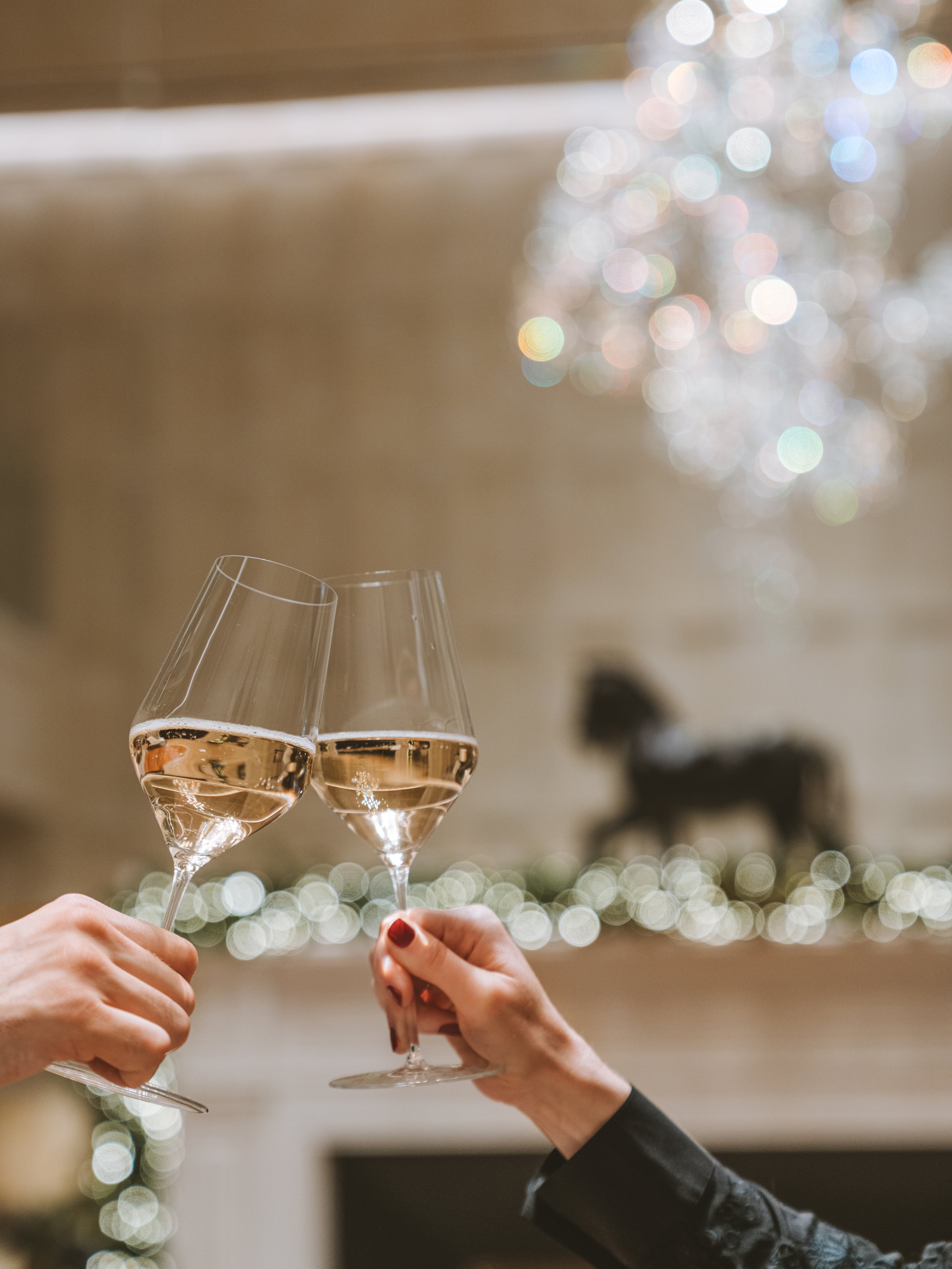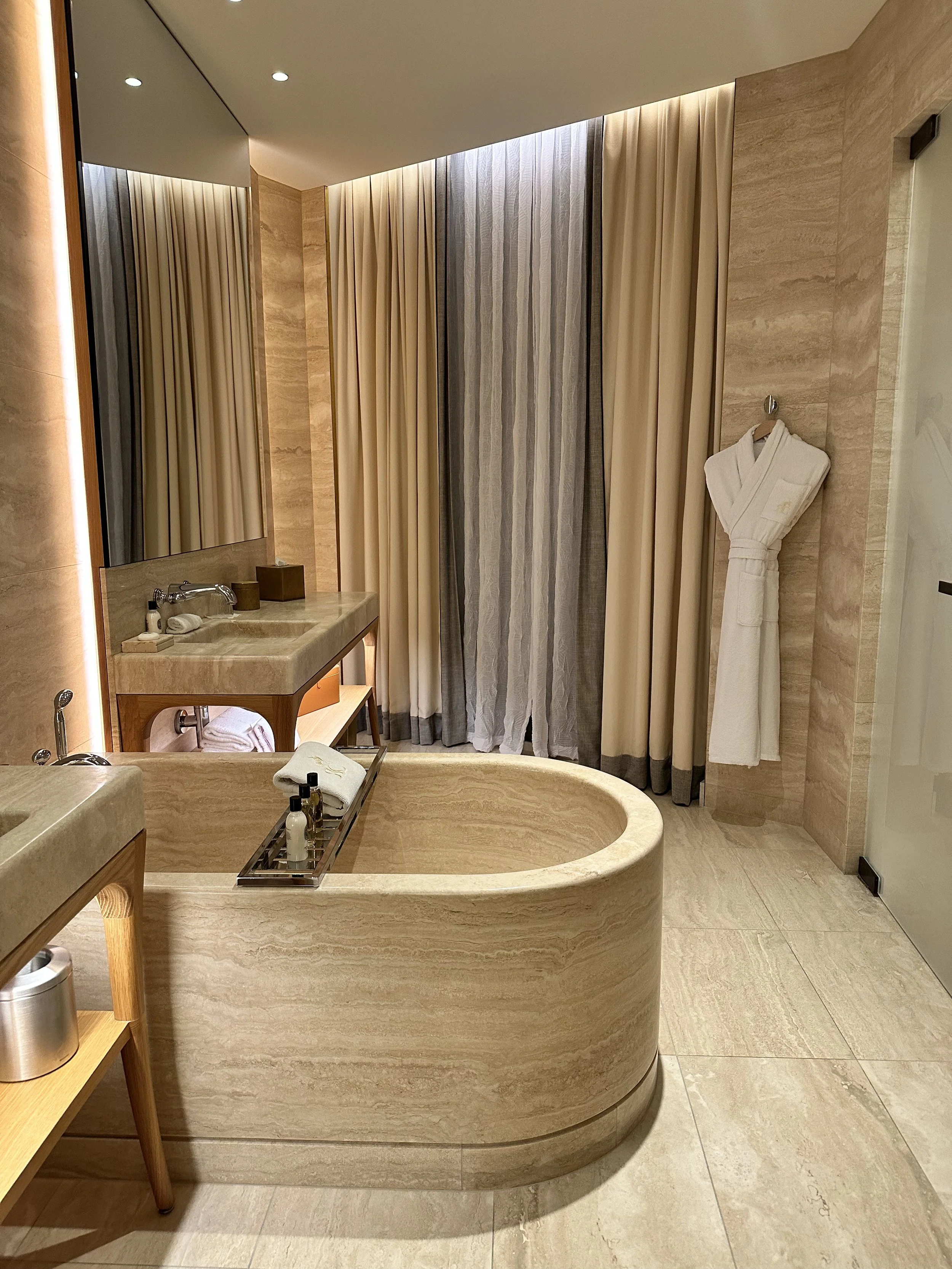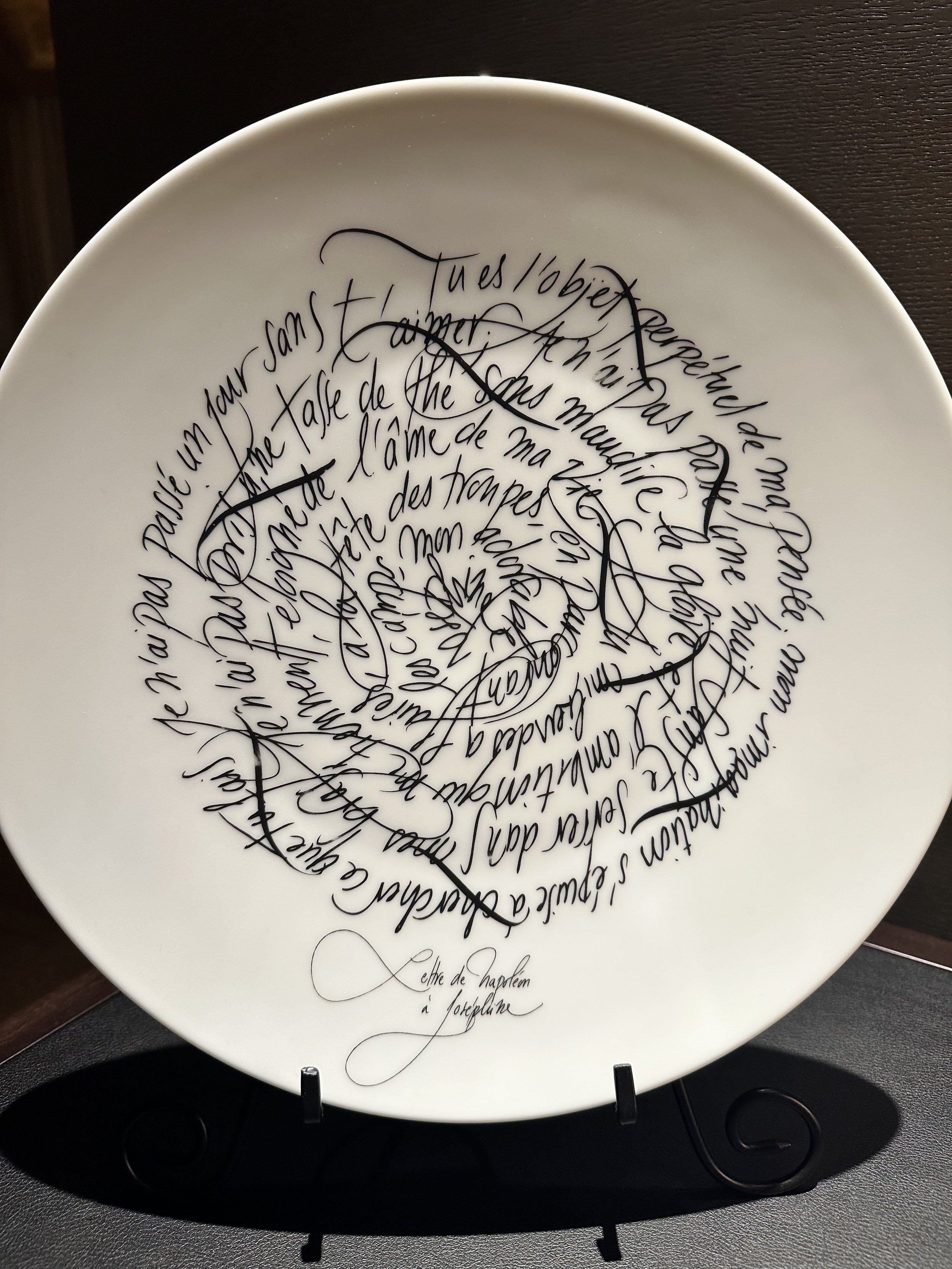Champagne Dreams
Royal Champagne Hotel & Spa
by Bridget Williams
For a man so often associated with being small in stature, Napoleon Bonaparte looms large in French lore and legend, elevated to the forefront once again courtesy of director Ridley Scott's recently released epic historical drama film. Napoleon's proclivity for grandiosity contrasted with his natural frugality, with Champagne being counted among the rare gastronomic pleasures he truly appreciated. A lifelong close friend of Jean-Rémy Moët, the founding grandson of the iconic champagne house Moët et Chandon, Napoleon would often visit the Moët winery in Epernay to buy a few cases during many of his campaigns. "I cannot live without champagne; in case of victory, I deserve it; in case of defeat, I need it," is a quote famously lent to the emperor and military commander.
Rooftop view from The Royal Hotel & Spa.
Another of Napoleon's frequent stops in France's Champagne region was a 19th-century post house, where the kings of France traditionally stopped en route to their coronation in Rheims. Picturesquely perched on a hilltop near the commune of Champillon, the site offers sweeping views of UNESCO-listed vineyards, forest, and the nearby quaint village of Hautvillers, where Benedictine monk Dom Pérignon is interred at the base of the altar in the humble Abbey of St Peter, founded in 665 AD.
Exterior view of The Royal Champagne, a Relais & Châteaux hotel.
Today, the humble royal rest stop is preserved as a Michelin-starred restaurant and cornerstone of the region's only five-star hotel and spa, aptly named The Royal Champagne, a Relais & Châteaux hotel. Already operating as a hotel when it was acquired in 2014 by American married entrepreneurs Mark Nunnelly and Denise Dupré, the couple retained Reims-based architect Giovanni Pace to lead a multi-million-dollar renovation and expansion of the property, which reopened in July 2018.
A statue of Bacchus watches over a vineyard in Champllon.
Unassuming from the approach, the forty-seven-room property's amphitheater-like architecture crowns the hillside like a champagne cork, embracing interiors that are a master class in quiet luxury, orchestrated by Parisian interior designer Sybille de Margerie. Modern in its approach, upon closer inspection, one is quick to note classical design elements associated with French history and local heritage. The hotel's logo—a horse and rider – first appears at the entrance and is repeated throughout, including the walls of its Le Bellevue restaurant to guest rooms' thresholds.
Outdoors in the fall.
At check-in, guests are offered a glass of the house bubbly, Leclerc Briant, a house founded 150 years ago in Cumières and resuscitated by Nunnelly and Dupré after they purchased it in 2012. The tiny bubbles in our glasses mirrored the light-filled interior's effervescence, highlighted by light wood tones, a soft and calming color palette, unique lighting elements, and nods to natural aspects of the local terroir.
t check-in, guests are offered a glass of Leclerc Briant, the house bubbly.
All the guest accommodations are large and thoughtfully designed with an ombré vine-inspired wallpaper adorning the wall behind the bed, heated floors in the oversized bathroom, and plenty of closet space. Arguably, the pièce de résistance are large private terraces, perfect for sipping bubbly and savoring the view, including the most spectacular sunsets I've seen in recent memory. Much like the weather in my home state of Kentucky, where it's often said, "If you don't like the weather, stick around a day or two, it'll change," I imagine that at least one French thinker or poet has described Champagne's skies as a femme inconstante.
Each of the spacious guest rooms provide vineyard views.
Alcohol is often considered counterintuitive to restive sleep. However, the hotel's unique Royal Sleep Experience package, which includes mocktails and a special dinner menu with sleep-supporting ingredients, a bedside sound machine with guided meditation options, a sleep mask embroidered with "sweet bubbly dreams," Sleep & Glow melatonin drops, sleep infusion herbal tea, and Aime essential oil sleeping mist, all but ensures a good night's rest.
Having the distinction of being Champagne's first destination spa, an entire ground floor wing of the Royal Champagne is given entirely over to wellness, the centerpiece of which is a sprawling heated 25m indoor pool with floor-to-ceiling valley-facing windows. There's also a hammam, an outdoor infinity pool and hot tub, a beauty bar, a well-equipped fitness center, a yoga room, and nine spa treatment rooms. The spa has forged impressive partnerships, including Jo de Carvalho, one of just 50 people in the world considered a master of the Kobido facial massage technique, Biologique Recherche, KOS Paris, and their newest partner, Clarins. I indulged with a results driven but relaxing Clarins myBlend facial, which combined deft human touch with technology, including an LED mask to stimulate cells close-up.
Swimming pool exterior.
Royal Champagne offers two dining options: the gastronomic restaurant, Le Royal, and the more casual but no less chic Le Bellevue bistro. Franco-Italian chef Paolo Boscaro oversees the 40-seat fine dining restaurant, Le Royal, the interior of which is heavy on Napoleonic references related to the women he loved. Portraits of his wives and mistresses are emblazoned on curved half walls in the room's corners. Love letters penned by Napoleon are reproduced in the round on specially commissioned chargers, while a statue of the emperor stands at the center of the room beneath a bubble-esque pendant-style light fixture. Head sommelier Philippe Marques hand-picks a local winemaker to create a pairing menu each month. During our visit, the six-course gastronomic tour-de-force, beautifully presented in a well-choreographed fashion, was paired with Champagne by biodynamic winemaker Francoise Bedel, who works with her son Vincent Desaubeau in the Marne Valley's Meunier-rich western fringe.
Franco-Italian chef Paolo Boscaro oversees the 40-seat fine dining restaurant. Le Royal, the interior of which is heavy on Napoleonic references related to the women he loved.
Chargers in Le Royal feature love letters penned by Napoleon.
If you've been told to never trust a skinny chef, you can throw that advice out the window after tasting the confections of petite pastry chef Claire Santos Lopes. Sublime without being overly sweet, her creative capabilities are on full display during seasonal Royal Tea Times, served fireside in the dramatic two-story library lounge. Lopes' winter offerings were laden with chocolate, dried fruits, and nuts. The latter, Claire pointed out, are full of antioxidants and vitamin E that can help you get through the cold months "like squirrels in the winter."
Pastry cher Claire Santos Lopes sharing her confections during a holiday tea service.
Inside, under a ceiling dripping with crystals, or outside on the sprawling terrace in warmer months, Le Bellevue is buzzy from breakfast through dinner. The diverse menu offers local specialties like Jambon cuit de Reims, to indulgent black truffle risotto. The adjacent Abysse Bar & Terrace is ideal for an aperitif and caviar, or a juicy cheeseburger.
Under a ceiling dripping with crystals, or outside on the sprawling terrace in warmer months, Le Bellevue is buzzy from breakfast through dinner,.
Royal Champagne is arguably the best place in the region to take a deep dive into learning all about Champagne, from on-site sommelier-led tastings to the hotel's champagne chauffeur program, which provides entrée to tasting rooms not typically open to the public via partnerships forged by hotel management with local growers and makers who often meet with their colleagues at Le Bellevue restaurant for a power breakfast or lunch. A self-guided two-mile trek through vineyards and forest park leads to Hauteviller, full of typical maisons champenoises and 140 whimsical wrought iron signs, historically used as a visual depiction of the various businesses inside. Epernay, and its famous Avenue de Champagne, is about 4 miles away, while Reims is less than a 30-minute drive.
The spa’s indoor pool overlooks the UNESCO-listed vineyards of Champillon.
We enjoyed a two-hour on-site and in-depth tasting at Salon Fines Bulles at a long table adjacent to a glass Champagne cellar with assistant head sommelier Anthony Laviron (one of five sommeliers on staff), who has been with Royal Champagne since it opened. Among the 450 champagnes from the hotel's extensive wine list, the approachable Anthony chose four of varying ages for our tasting, during which he dispelled several myths, including that Champagne must always be served super-chilled and the "good stuff" can and should be cellared. Our engaged group sipped with intention, learning to appreciate the nuances of flavor and texture.
A lover of old vintages, Anthony is adept at romancing the vine and the enduring allure of Champagne as a drink and a destination. "Imagine that a couple chooses a bottle from the 1980s," he surmised as we tasted a 2004 Gosset' Grand Millesime' Brut. "It could have been harvested on the day they met or were married, and now they and it have both traveled here to finally meet at this very tasting room."
























